|
|
| |
|
SAIGON CHURCHES & CATHEDRALS » Welcome to Ho Chi Minh City (Otherwise Known as Sài Gòn) » Things to See in Ho Chi Minh City (A-Z): Ben Thanh Market » Cholon » Churches » Celebrating Christmas in Ho Chi Minh City » Cao Dai Temple » Chu Chi Tunnels » Pagodas » Park Life » Reunification Hall » Sài Gòn Zoo » Sài Gòn River » Water Puppets » Things to Buy: Furniture » Things to Eat in Ho Chi Minh City: Restaurant Guide » Places to Party in Ho Chi Minh City: Bars and Clubs » Places to Stay in Ho Chi Minh City: Saigon Hotels » Getting There: Ho Chi Minh City's Tan Son Nhat International Airport » Further Afield: Phu Quoc Island » Buying Real Estate in Vietnam? » Learning Basic Travel Vietnamese » Media in Vietnam » Cambodian Churches |
SteepleStacked /// SAIGON CHURCHES
THERE ARE A TON OF CHURCHES IN HO CHI MINH CITY. There are tonnes of temples too, and many of them are gaudy. That's not why we are here. We are here for the churches. BASILICA OF NOTRE-DAME  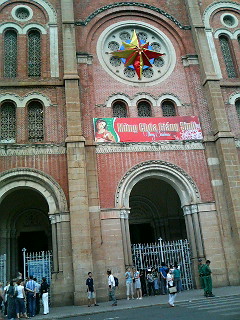 BY FAR the most famous and important Christian house of worship in Ho Chi Minh City is the Basilica of Notre-Dame, which is ringed by a very French roundabout with crazy traffic in the heart of the central business district. Just about every tourist visiting the city makes a pilgrimage to this structure, or at least glimpses it from the window of their tour bus. If you had only two days in Ho Chi Minh City, this would be the church you have to see. The basilica is the heart and soul of Ho Chi Minh City's Catholic faith, but is also important to Buddhists and other non-Christians, as well as being an icon of the nation. If you happen to be here on Christmas Eve or other special occasions, you will see locals of all creeds partaking in the festivities, throwing confetti all over each other or even lobbing full heavy cans of shaving cream high into the air (be careful, it can be rough!) I took part in the Christmas Eve celebrations here in 2007, and they were pretty wild, to be sure. I was pulling confetti out of my hair for days after. DEVOTION TO THE SAINTS 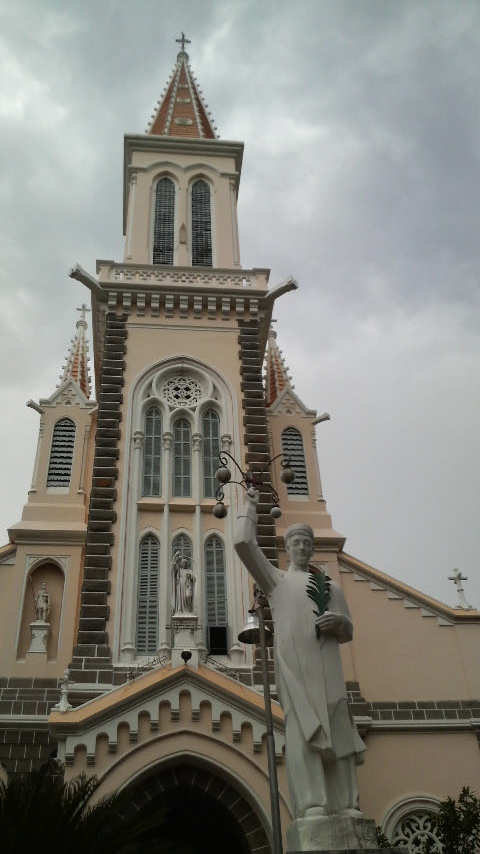 NOT FAR from Notre Dame, near the September 23 Park and the Pham Ngu Lao backpacker district can be found Nhà thờ Huyện Sỹ or the Church of St. Philip the Apostle. It towers up over the traffic on Tôn Thất Tùng. 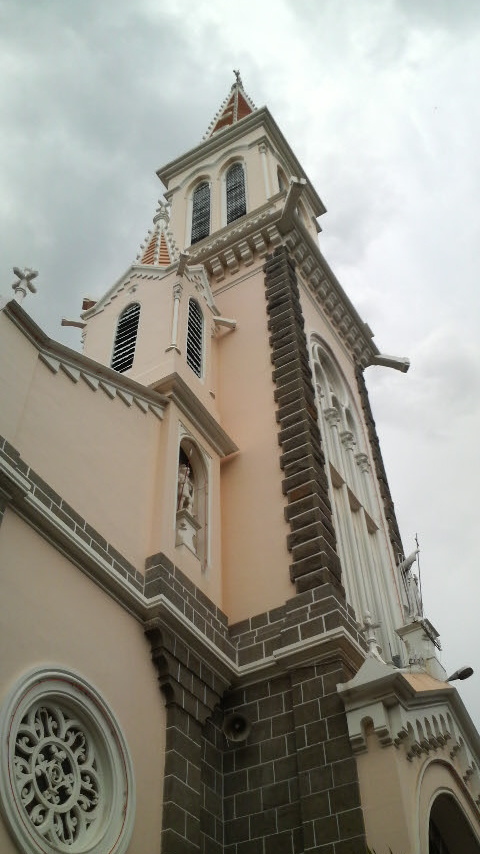 Nhà thờ Huyện Sỹ is one of the prominent landmarks in District 1, and has served the local Catholic community for more than a century.  It was in the Rainy Season of 2010 when I made this visit, and some kind of service was in session. 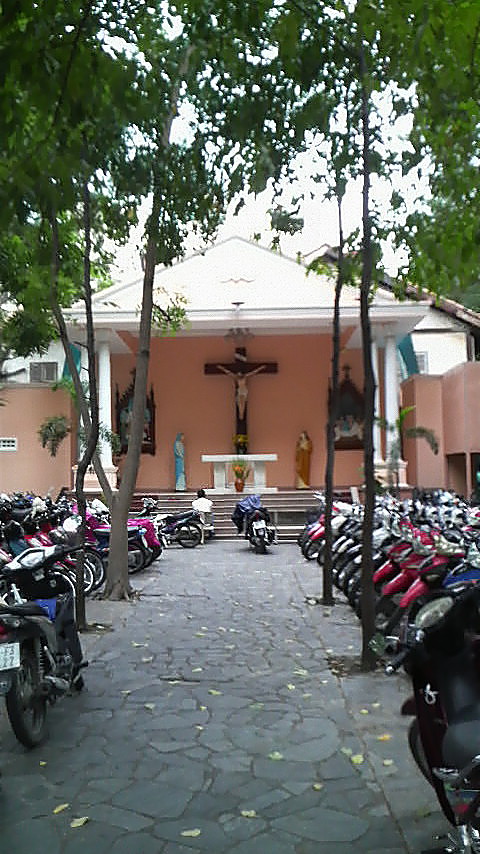 Around the corner, I came across a very Vietnamese sight: motorbikes, and Jesus on his cross...
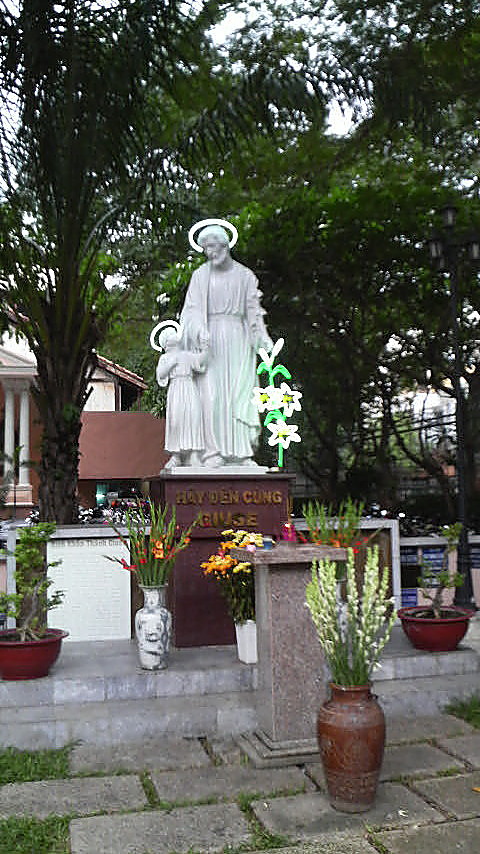 And these dudes with neon haloes. GROOVY GROTTOES 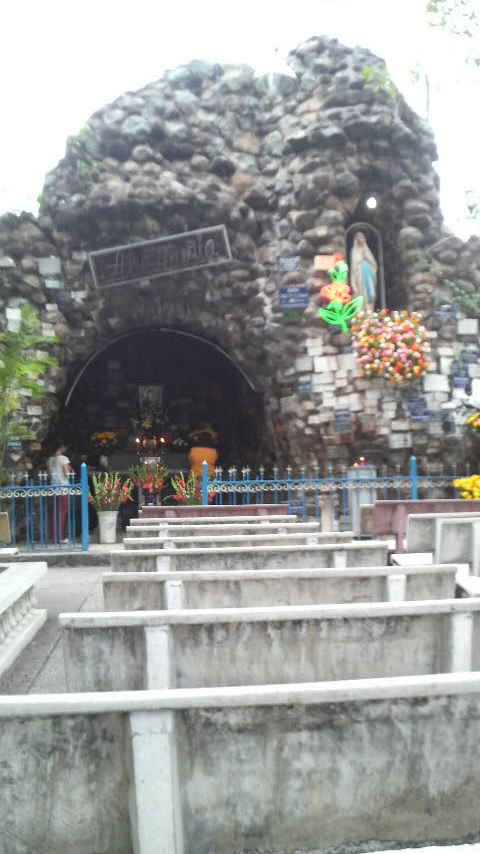 WHERE I come from (Australia) there are plenty of churches but I have never seen the strange artificial mound pictured above. Actually these structures are called grottos, and they seem to be a standard feature alongside Vietnamese churches. With their Mother Mary icons and flowers, they look like they would be more at home close to a volcano in the Italian countryside, rather than in the middle of a south-east Asian metropolis. It is just another example of how the Vietnamese have built upon their colonial legacy, to create something exotic and unique! According to Wikipedia, this grotto was constructed in 1960 as a monument dedicated to Our Lady of Lourdes. Every year on February 11, a Mass is held here to pray for the sick.
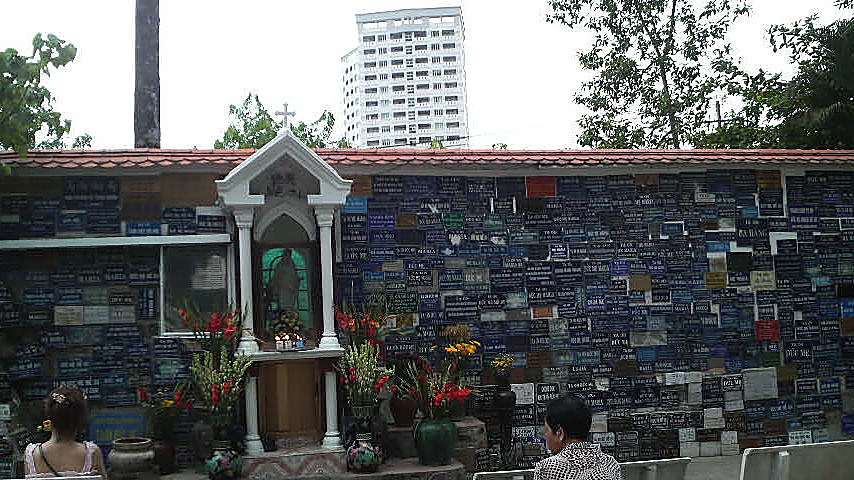 Mother Mary statue, crucifix, gorgeous flowers and a wall packed full of gratitude.
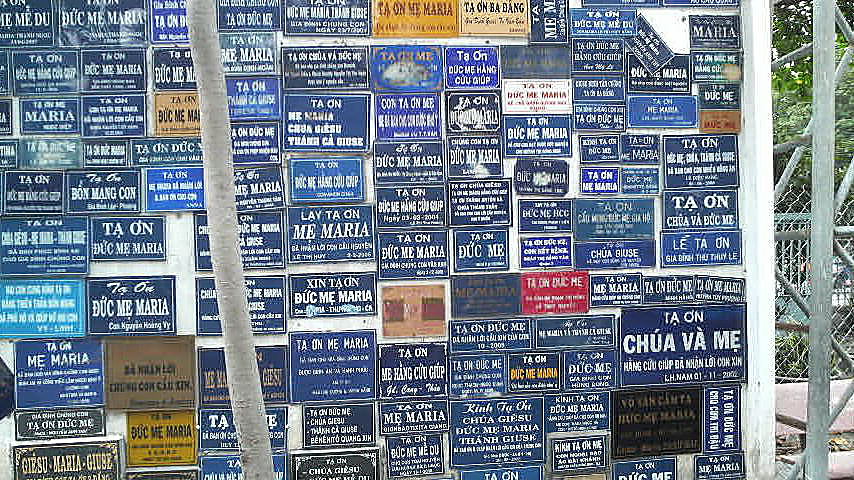 These plaques are almost all adorned with the title Mẹ Maria, or "Mother Mary". Some of them say: Chúa và Mẹ or "God and Mother". Tạ Ơn Đức Mẹ means "Thanksgiving Mary". Or something like that. Obviously a lot of people come here to give thanks to Mary. For what, exactly, I am not sure.
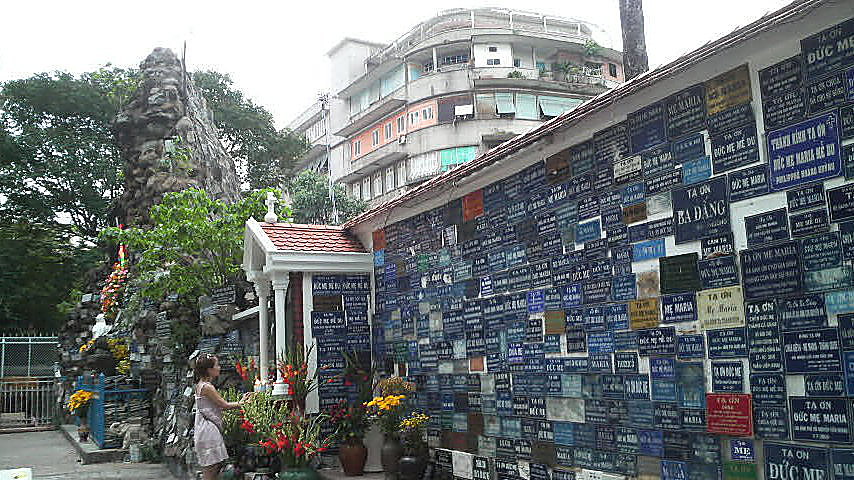 For the granting of the wishes that they made, by candelight, in the aforeposted grotto shot? It is a possibility. 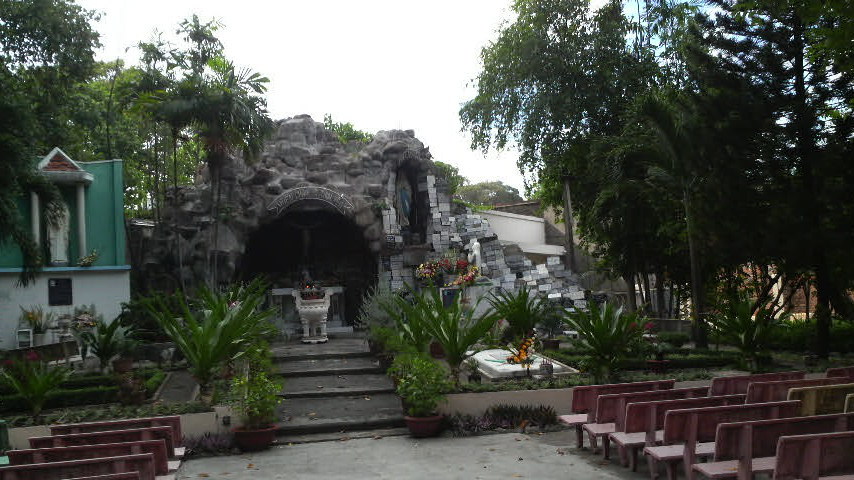 Here is another grotto on the road to Chợ Lớn. The church it adjoins is apparently dedicated to Jean of Arc.
 There is a nice park nearby, which provides lovely views of the pristine church.  Communism has its own saints, of course, and it has erected monuments to them all over Vietnam. This one seems to celebrate the role of the army, or is it a celebration of revolution? CHRISTIANITY IN THE SLUMS 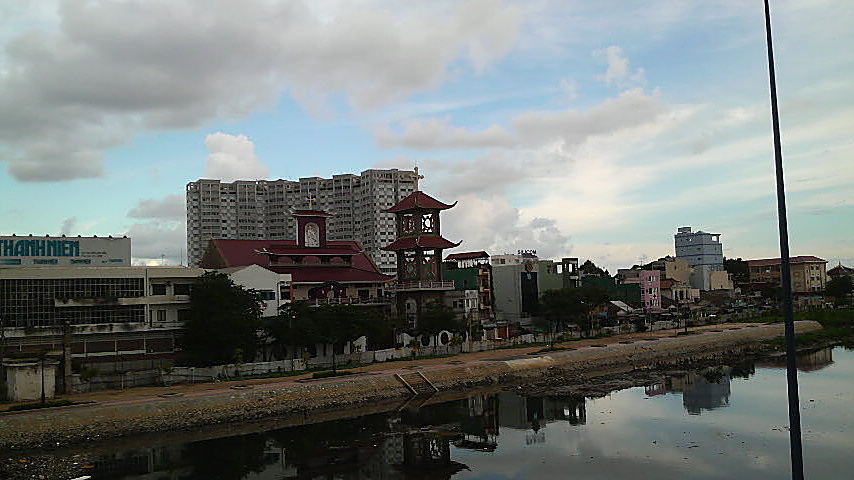 DISTRICT 4 HAS a reputation of being the slummy side of Ho Chi Minh City. Since I like slums, I made it a point to walk through a part of the district on my last trip to Vietnam (June/July 2010). To get there from District 1 you cross a bridge over a squalid looking vegetable market, and then a canal lined with garbage. On the other side of the canal a large church, Vĩnh Hội, rises from the warehouses. It might be a poor neighborhood, but the people who live here are rich in spirit.
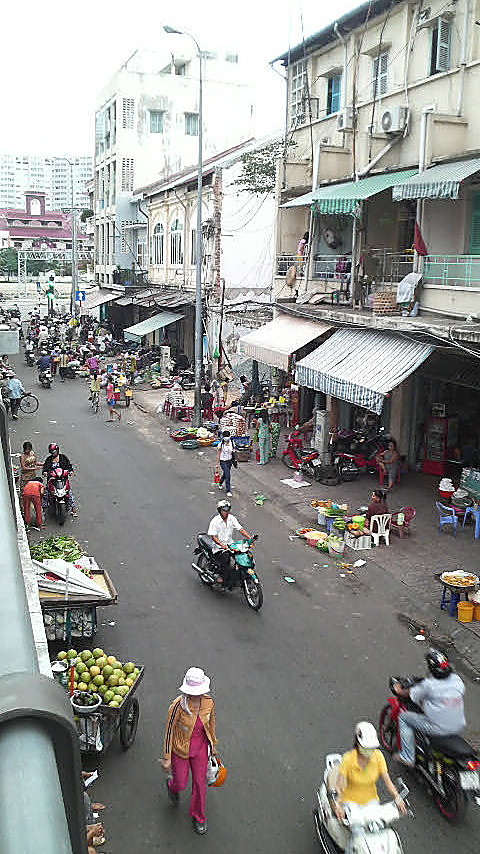 The church is the heart of this community, that is for sure.
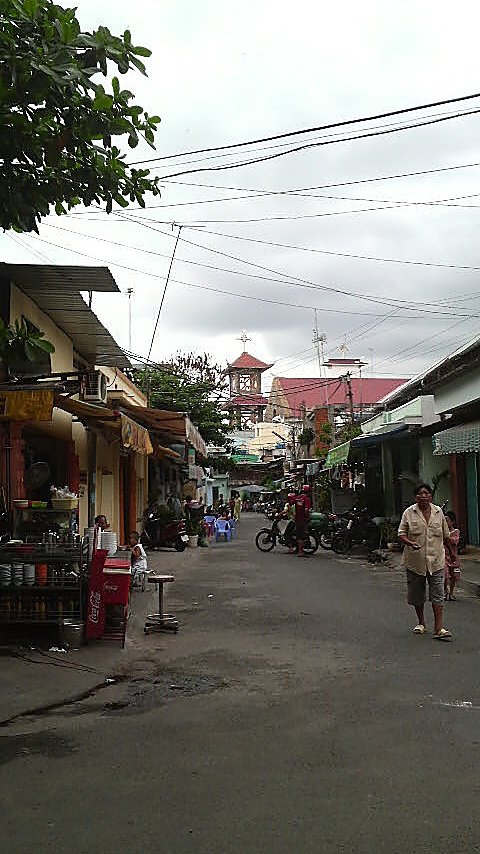 Vĩnh Hội, which is located at 158 Bẽn Vân Đồn Street, apparently dates from 1966. 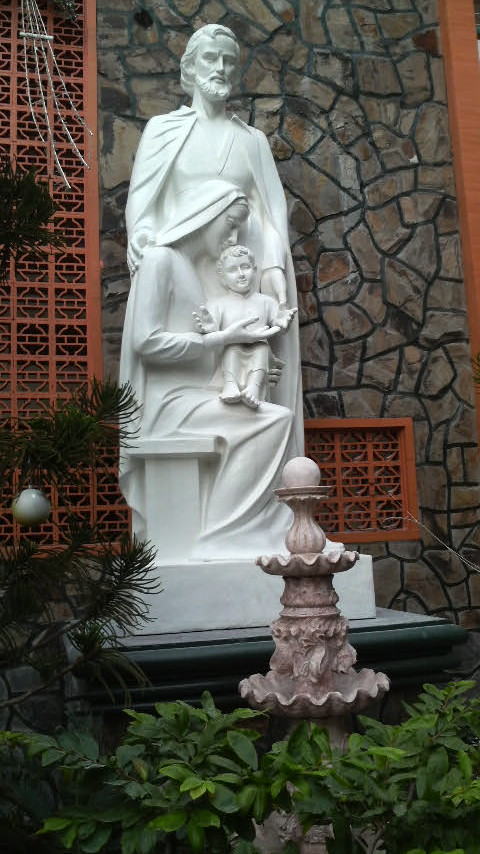 That means it was built right in the middle of the turmoil of the Vietnam War. 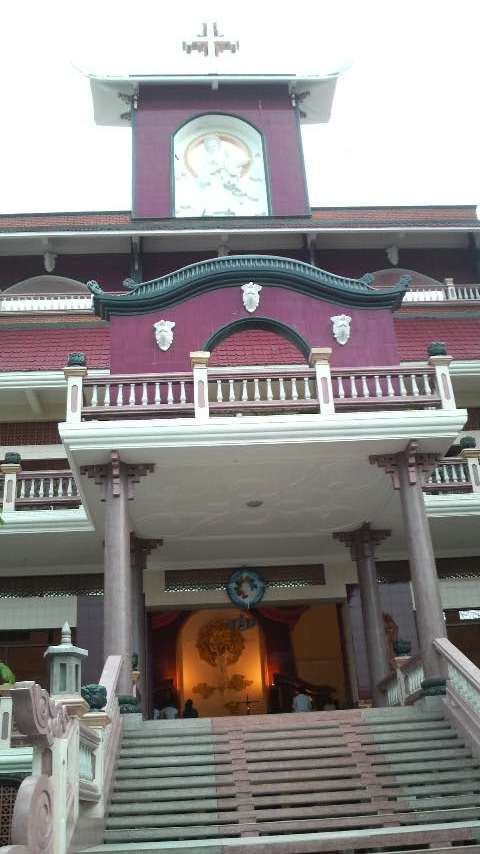 View Larger Map TWIN SPIRES 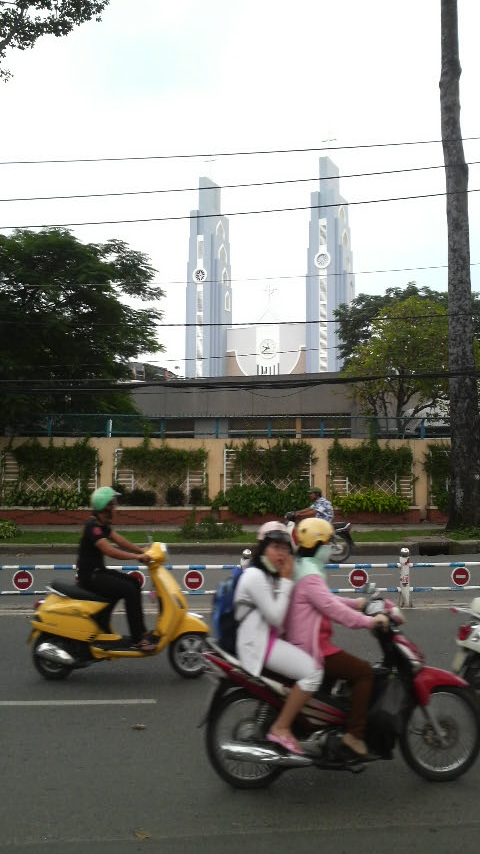 I HAVE been trying to find Saigon Racetrack for some time now. I haven't been able to find it, but on my last walk in its direction, on the 3 Tháng 2 Road, I saw this new church rising from the streetscape. 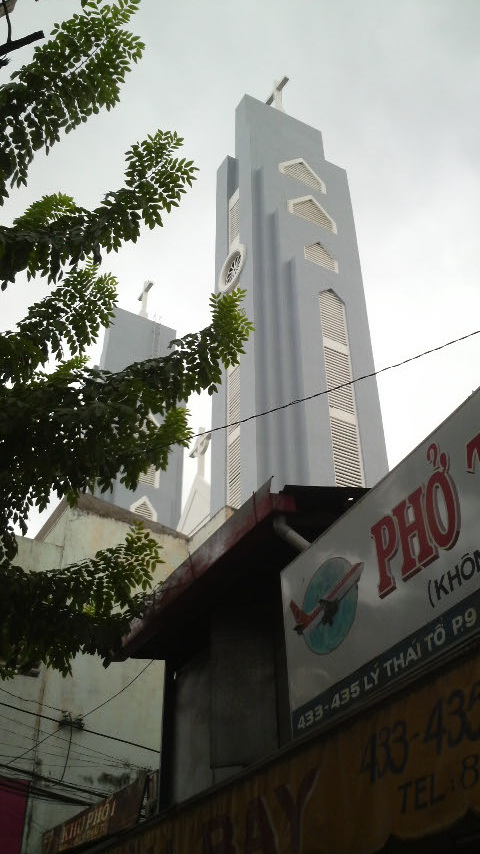 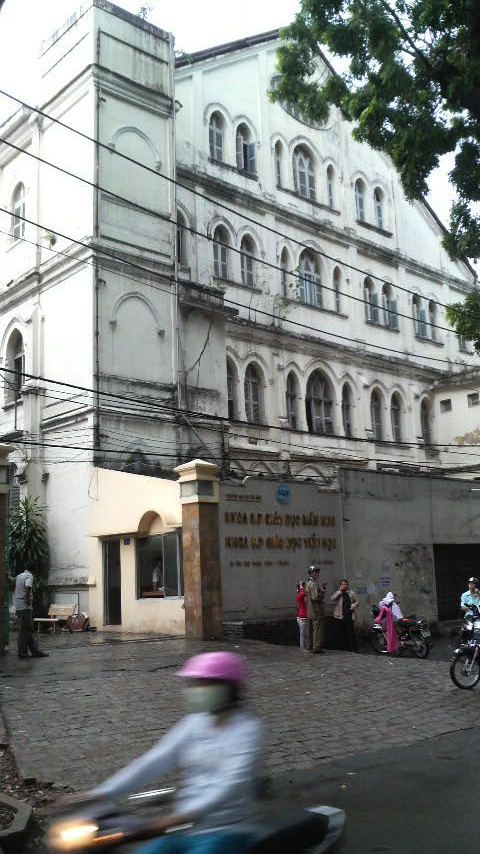 The Human Rights Watch says: "Nguyen Van Dai remains in prison, serving a four-year sentence under article 88. He was arrested for teaching law and human rights to students at his law firm. He founded the Committee for Human Rights in Vietnam with Le Thi Cong Nhan in 2006, and took on the legal defense for embattled Protestant churches, including the Mennonite pastor and former political prisoner Nguyen Hong Quang."
 On the way to Saigon Railway Station I passed this small church. it mustn't have been open that day. Maybe the current decorators are exaggerating a bit to demonstrate the counter-socialist ideals of the south before its liberation, or maybe its accurate, but this place is like a cross between the Playboy Mansion and a Bond villain's secret lair. The cinema, game room, snooker tables and piano co-exist with the Map Rooms and underground bunkers decked out with those old Telecom Eireann phones (though I don't think they were the actual suppliers) and enormous radios. "
Located on the hill of coconut palm trees occupied around 3.5 hectares,
"On Sept. 07, 1954 Norodom Palace was handed over between the French Government representative-General PAUL ELY and Saigon ruling representative-Prime Minister Ngo Dinh Diem. Ngo Dinh Diem decided to change the name of the Palace to the Palace of Independence. Since then the Palace of Independence became the residence of Ngo Dinh Diemfs family and a place witnessing many political events. Ngo Dinh Diem maintained a family ruling dictatorial regime, he pushed the people into strategic hamlets, carried out the 10/59 law bringing guillotines to all over the South, he did not only cause indignation among the people but also caused disagreement within the Government cabinet of Saigon.
PLACES TO STAY
Thien Hai Son Resort: US$44. 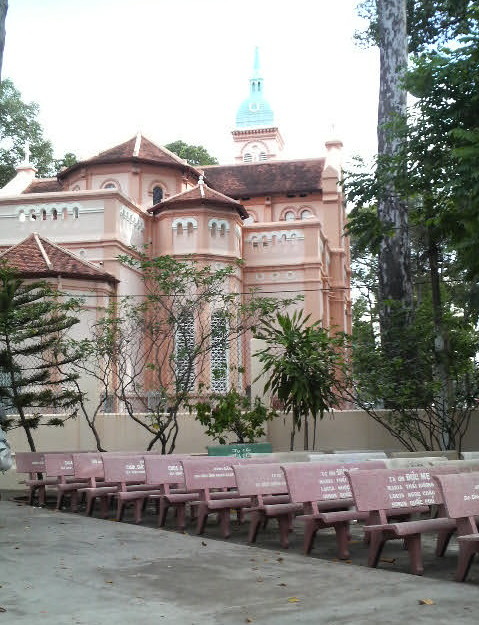 Duc Church is located at 41 Vo Van Ngan street, Linh chieu street, Thu duc district, Ho chi minh city, near Thu duc market. It's over 100 years old, it still remains magnificently beautiful. It was built in 1880 on the design of a Catholic priest named Boutier, who also designed the Nhà thờ Huyện Sỹ. He was appointed vicar of Phong Phu Parish- Thu Duc. (View 846) Yen Phuong Minihotel US$8 "In another story, Tran Minh Phuong, 23, an accountant at a toy-making company in Ho Chi Minh City (HCMC) says she earns VND1.8 million ($113) a month and has to pay a third of . "They all dream of owning their own apartments but with property price sky-rocketing that is simply impossible. "Not only locals but about 81,000 expats in Vietnam have also suffered from soaring rents and greedy landlords, even though their income is much higher..." (For full story click here.)
| |
|
| ||